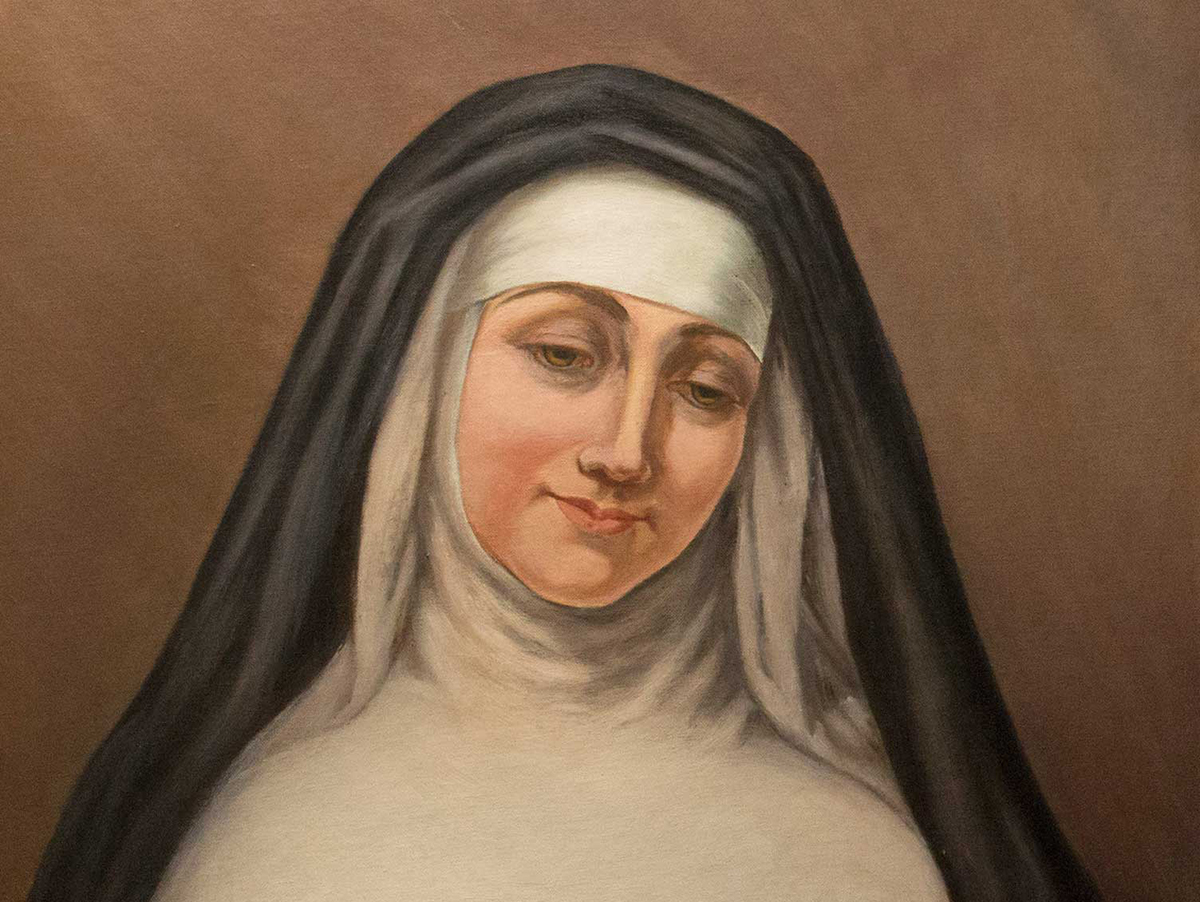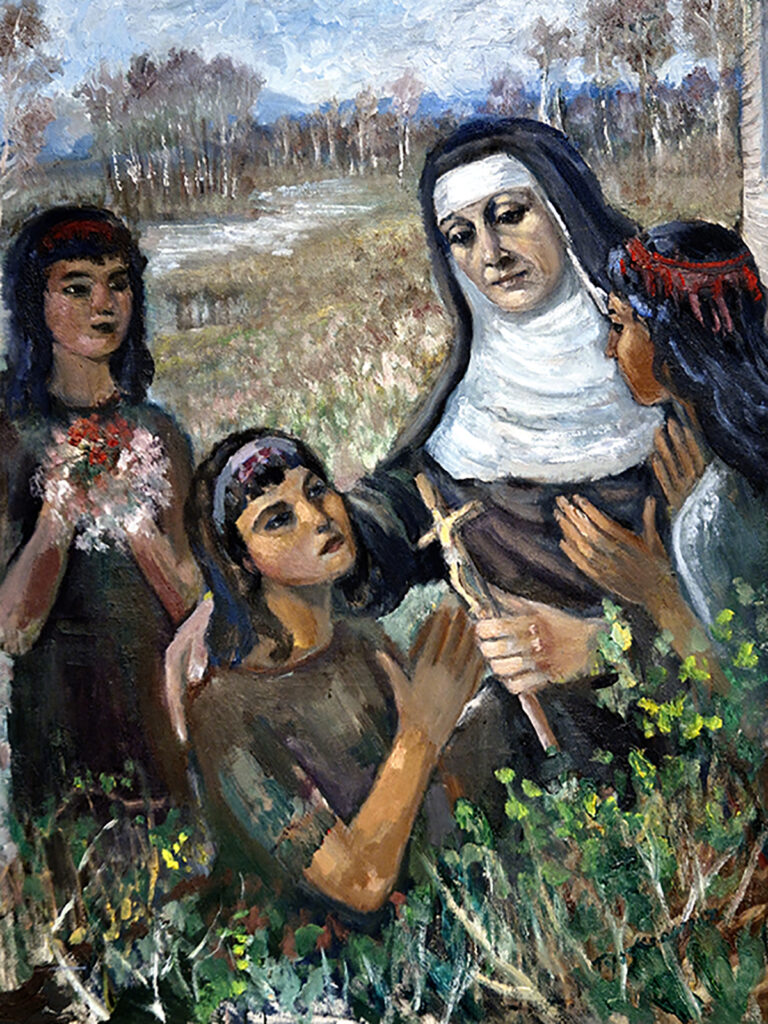
Marie Guyart de l’Incarnation is born on October 28th, 1599, in the French city of Tours. She founded the Monastery of the Ursulines of Québec and also the first school for young girls in North America. Around the age of 15, although attracted by religious life, her parents wanted her to get properly married. That is why, at the age of 17, she married Claude Martin, a silk maker. In 1619, she gives birth to her first and only child, Claude, but becomes a widow, a few months later.
Marie inherits a bankrupt family business. A shrewd businesswoman, at the early age of 19, she is able to get rid of all the debts very quickly. In 1621, she starts working for her brother-in-law who owns a flourishing transportation company. All through these years, she has intense spiritual experiences allowing her to enjoy a great intimacy with God the Father, Son and Holy Spirit. None of her relatives were aware of this extraordinary communication. In her daily activities, she is sensitive to the continual presence of God who guides and sustains her.
The calling for a religious vocation remains strong despite her busy life and schedule. Eventually, when she is 30 years old, Marie Joins the Ursulines Monastery in Tours while her son Claude is taken care for by her sister and is educated at the Jesuit College in Rennes. She adopts the name of Marie de l’Incarnation.
While praying, one day, she receives from the Lord the urgent mission to leave and go to Canada to prepare a house for Jesus and Mary.


On August 1st, 1639, Marie de l’Incarnation arrives finally in Quebec. She and her companions, Ursuline and Augustinian nuns, are the first cloistered sisters to settle in New France.
Upon her arrival, she begins to learn the Algonquin language and join in teaching young girls and adults of the colony. Later, she will prepare different catechisms and dictionaries for the natives.
As the Mother superior, Marie de l’incarnation overseas the construction of the monastery that is still found today on the same location. It opened on November 21st, 1642, but is completly destroyed by fire during the night on December 30th 1650. The Ursulines decided to rebuilt it.
Marie de l’Incarnation shows great strength and resilience. all trough this project. She takes on multiple duties: mother superior, bursar, mistress of novices, teacher.
Since the sisters from France belonged to various monasteries originating from different congregations, with different rules controlling them, Marie decides to write constitutions suited to their new country. With the help of Father Jérôme Lalement, and with the approval of all the sisters, the new Rules and Constitutions of the Monastery of Quebec are adopted in 1647.
Soon, Marie de l’Incarnation gains a solid reputation for her good sense and wisdom. governors, missionaries, soldiers and even trappers seek her advice at the monastery.
Meanwhile, she continues to correspond constantly with France, especially with her son, now a monk. Thousand of letters are sent by her, a precious documentation on the first decades of life in New-France. Several of them are filled with insightful spiritual advices, as well as confidences revealing her own intimate relationship with the Lord she likes to call her beloved Spouse.
Neophytes = newly baptized Christians
Marie de l’Incarnation describes the solidarity showed by the citizens of Quebec when the monastery was destroyed by fire in 1650.
“We tried to save the children, and were successful, although it was quite a dangerous venture.
(…) All the Fathers hurried to the chapel, and carried outside the Blessed Sacrament, and most of the furniture from the sacristy. One of the Brothers thought that the flames would devour him. After the fire, I found my poor sisters almost naked, praying God in the snow. (…) Many onlookers were quite moved by this terrible spectacle and wondered if we were crazy or filled with a tremendous love for God.
The sisters from the hospital, upon learning of the disaster that struck us, invited all of us to come and stay with them. (…) We remained in their house for three weeks, all fifteen of us, living alongside them, sharing their table and prayers. It was very consoling for us to witness the love and affection of the inhabitants, not to mention the Fathers. All of them did their utmost to come to our help, even sending us the fabrics destined for their own clothing. This compassion was also expressed by the poor: one offered us a napkin, another one a shirt, even a coat, a hen and a few eggs. All these demonstrations of compassion moved us greatly. Although, you are aware of the poverty of the country, the spirit of charity is even greater here.”
Letter CCXXXII of Marie de l’Incarnation to a Jesuit. September 1st, 1651.